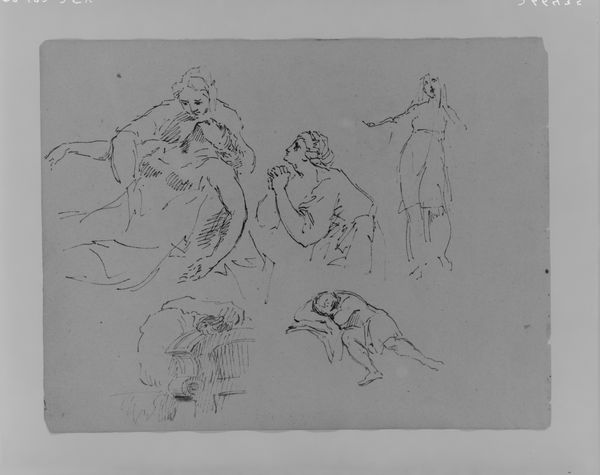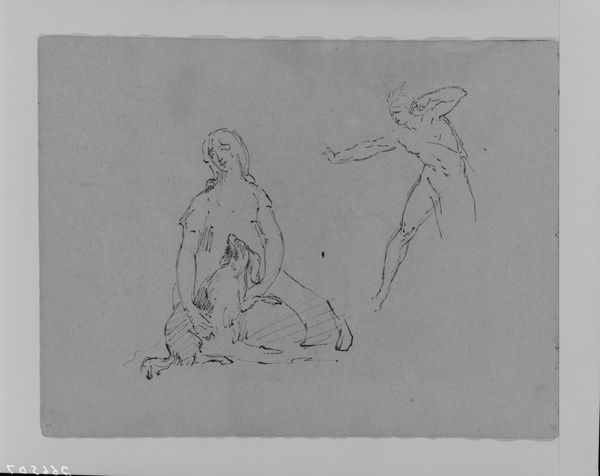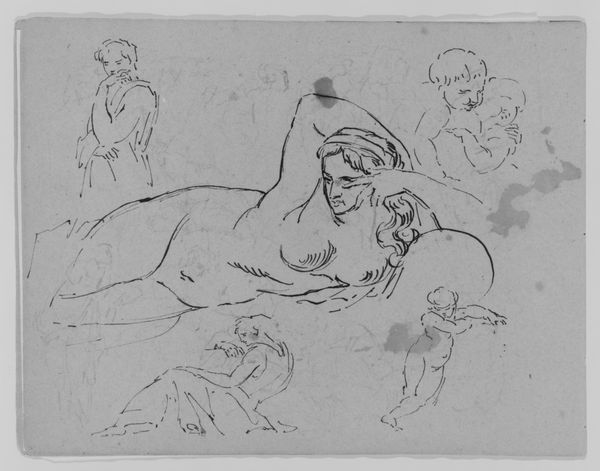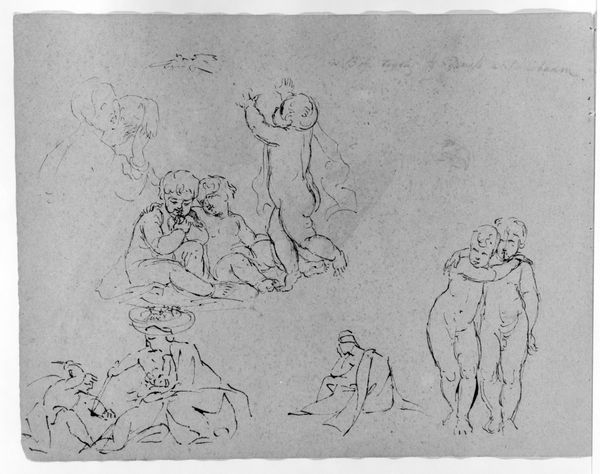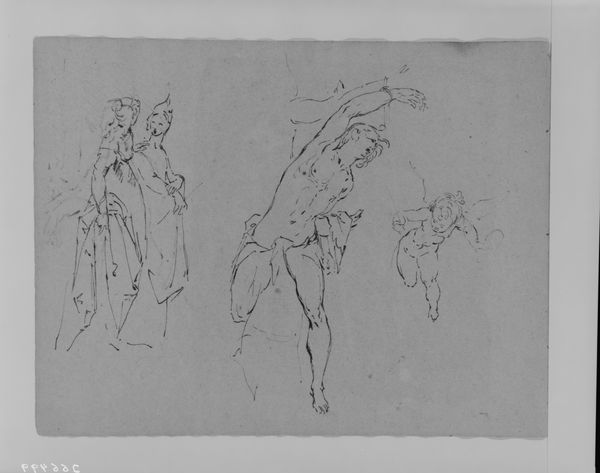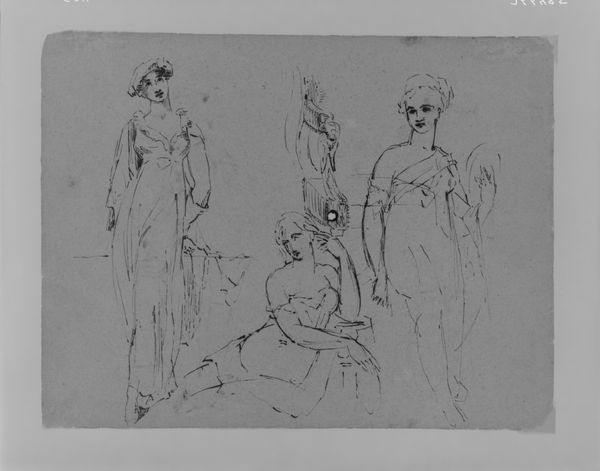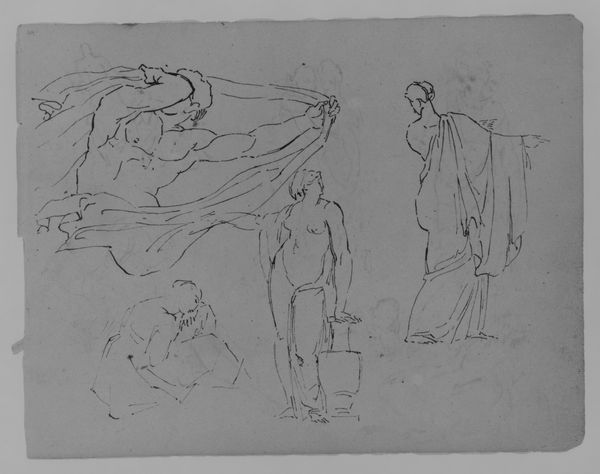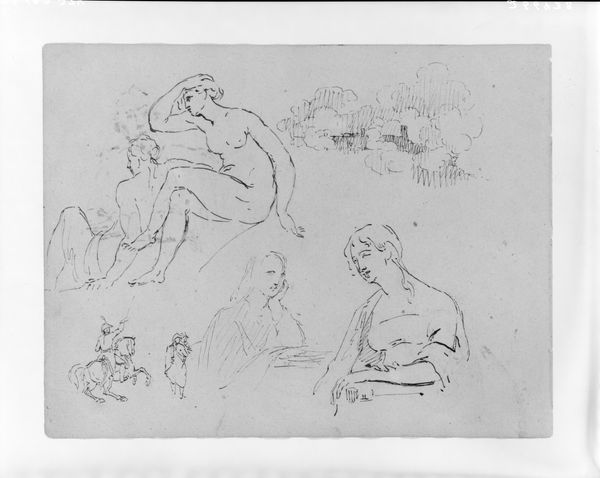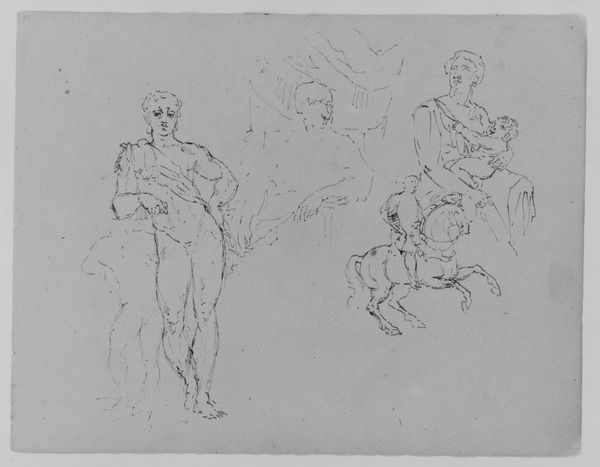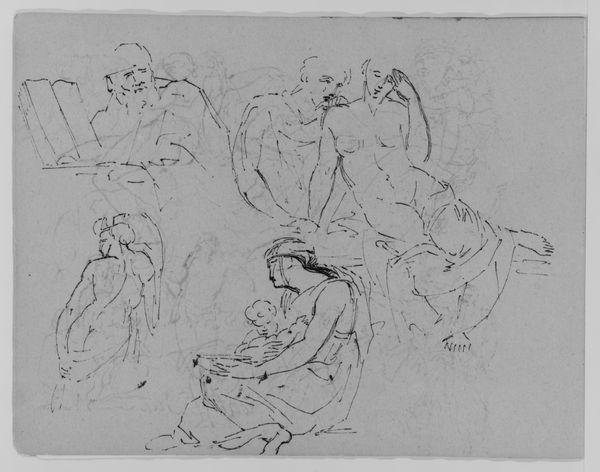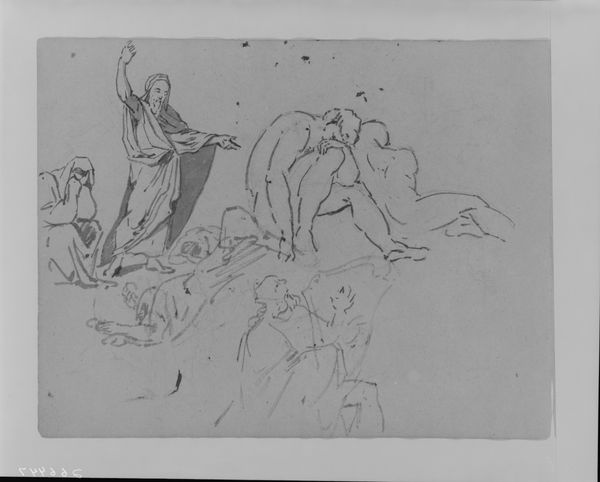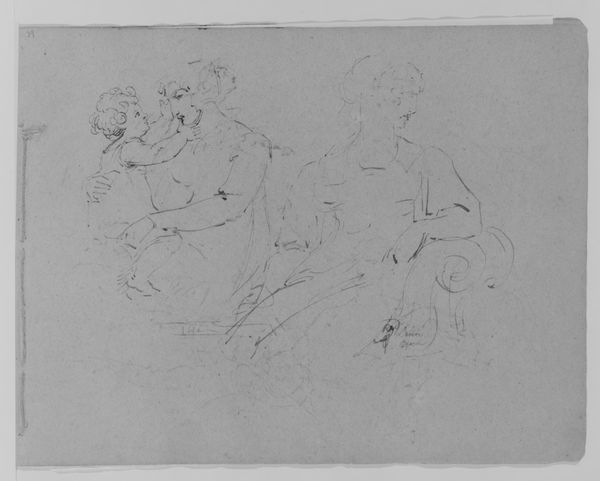
drawing, paper, ink
#
drawing
#
light pencil work
#
pencil sketch
#
incomplete sketchy
#
figuration
#
paper
#
personal sketchbook
#
female-nude
#
ink
#
idea generation sketch
#
sketchwork
#
ink drawing experimentation
#
romanticism
#
sketchbook drawing
#
genre-painting
#
nude
#
sketchbook art
#
male-nude
#
initial sketch
Dimensions: 9 x 11 1/2 in. (22.9 x 29.2 cm)
Copyright: Public Domain
Curator: I'm immediately struck by the sketchiness, the incompleteness of this drawing. It feels so intimate, like a stolen glance into the artist's process. Editor: Indeed. What we have here is Thomas Sully’s “Five Nude Bathers (from Sketchbook)," likely dating between 1810 and 1820. It's a drawing in ink on paper currently held at the Metropolitan Museum of Art. For me, it provokes thoughts of representation and agency within its historical context. Curator: The romanticised nudes feel inherently academic, drawing upon a legacy of art history dominated by the male gaze and what John Berger famously dissected in 'Ways of Seeing'. Does this work do something to challenge the standard nude, or simply replicate patriarchal dynamics? Editor: Well, it's found within a sketchbook. Considering its material status allows for alternate considerations. Could the quick nature of ink drawing have something to do with economics? Were quicker works and the nature of practice related, impacting gender depictions within a time constraint? Curator: I think that approach has some real potential, but still I'm also led to reflect on the relative anonymity and ambiguous expressions. To whom do the female subjects depicted address themselves and to what audience? Are they given enough agency? Editor: The swift ink strokes used create a real fluidity within the composition. Are they actually "finished" to begin with? Does completion play into art’s value within a material context? To that point, what sort of paper are they on? How easily would more expensive pigments adhered to such paper from that time? I see this materiality pushing against notions of traditional painting with set, conventional expectations, or finished statements regarding beauty, representation or identity. Curator: These are valid points to think about, especially considering questions around how and why preliminary sketches are received. But, returning to subjectivities represented, in an intersectional sense, do we get enough in terms of diverse representation or challenging the Westernised artistic figure in the subject matter itself? It feels caught between modes of representation, but not committed to change. Editor: That’s precisely where the power of material exploration lies. These questions would necessitate pigment, tools and studio. By its ink drawing medium, the questions about art making we arrive at highlight the socioeconomic frameworks that shaped, in this case *didn’t* fully shape, visuality and possibility. I feel this challenges conventional boundaries within its very own sketchbook format. Curator: An engaging material reading; it adds complexity to how we read even a seemingly simple sketch from the Romantic era. Editor: Indeed. By exploring its materials, this sketchbook art, with all its questions about artistic economies and what tools shaped such work, asks important questions that can lead to deeper reflection about visual art culture in general.
Comments
No comments
Be the first to comment and join the conversation on the ultimate creative platform.
